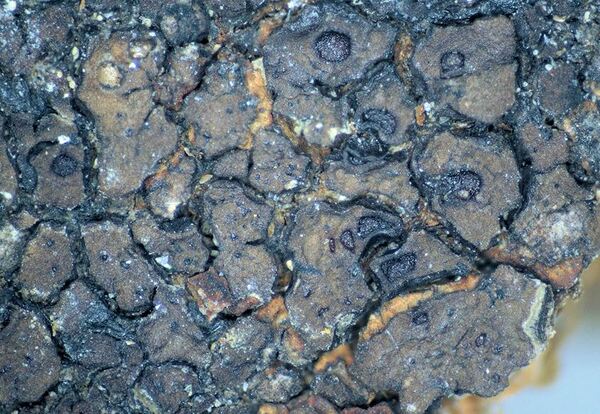Acarospora helvetica H. Magn.
Svensk Bot. Tidskr., 18: 336, 1924.
Synonyms: Acarospora austriaca H. Magn.; Acarospora obscura H. Magn.
Distribution: N - Ven (Knudsen & Kocourková 2020). C - Sar (Knudsen & Kocourková 2020).
Description: Thallus crustose, episubstratic, areolate, the areoles angular to almost round, 0.2-1(-3) mm wide, contiguous and forming a rather well-delimited thallus, more rarely dispersed, sometimes the peripheral ones indistinctly lobulate, flat to slightly convex, usually dark brown to reddish brown with a darker margin, epruinose. Cortex 15-20(-30) µm thick, the upper part dark brown, the lower part colourless, without a distinct epicortex; algal layer continuous, 30-80 μm thick; medulla white, up to 300 μm thick, the hyphae 3-5 μm thick. Apothecia 0.2-0.5(-1) mm across, usually immersed, 1(-5) per areole, with a slightly concave to flat, smooth, brown to reddish brown disc, and a poorly evident to slightly raised thalline margin; proper margin forming a distinct parathecial ring in mature apothecia. Proper exciple at first thin, later expanding up to 100 μm above the disc; epithecium pale brown 10-25 μm high; hymenium colourless, 70-100-(120) μm high, the hymenial gel hemiamyloid, I+ blue turning reddish; paraphyses 1.5-2 µm thick at mid-level, the apical cells up to 3 µm wide; hypothecium colourless. Asci 100-200-spored, clavate, the apical dome K/I-. Ascospores 1-celled, hyaline, narrowly ellipsoid, 3-4(-5) x 1.5-1.7(-2) μm. Pycnidia rare. Conidia c. 2 x 0.5 μm. Photobiont chlorococcoid. Spot tests: cortex and medulla K-, C-, KC-, P-, UV-. Chemistry: thallus without lichen substances. Note: on intermediate, base-rich siliceous rocks, from the submediterranean to the alpine belt; known from Central and Southern Europe. For further details see Knudsen & Kocourková (2020).
Growth form: Crustose
Substrata: rocks
Photobiont: green algae other than Trentepohlia
Reproductive strategy: mainly sexual
Pioneer species
Commonnes-rarity: (info)
Alpine belt: extremely rare
Subalpine belt: rare
Oromediterranean belt: absent
Montane belt: rare
Submediterranean belt: very rare
Padanian area: absent
Humid submediterranean belt: very rare
Humid mediterranean belt: absent
Dry mediterranean belt: extremely rare

Predictive model
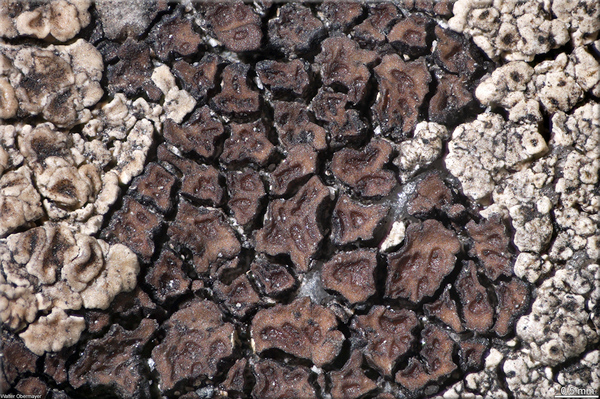
Walter Obermayer - Source: Lichens of Noricum - http://lichens-of-noricum.uni-graz.at/
Stubalm-Speikkogel, Poelt 24.6.1973:
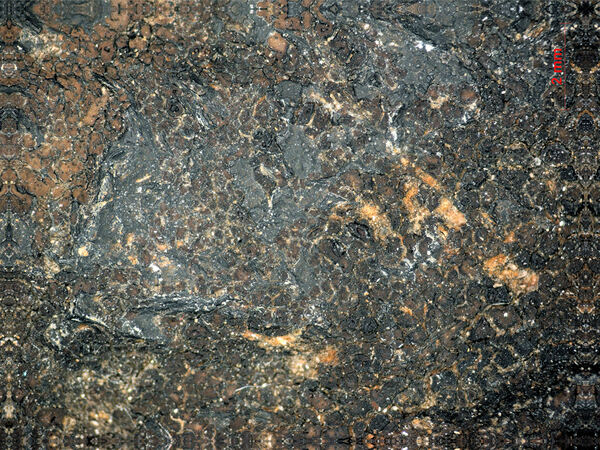
Lucia Muggia CC BY-SA 4.0; Owner: Department of Life Sciences, University of Trieste
Herbarium: GZU (327-81, 1981, Leg. J. Poelt)
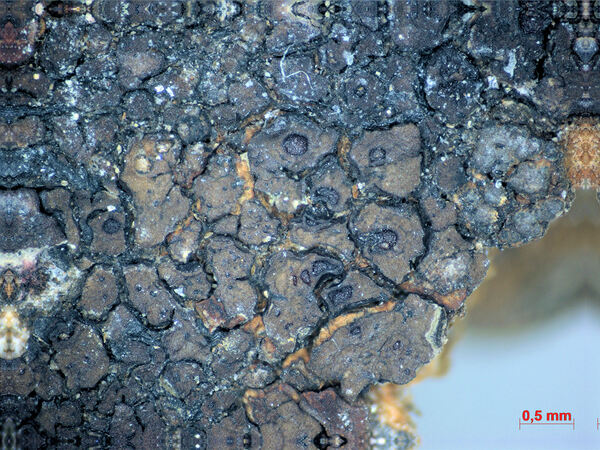
Lucia Muggia CC BY-SA 4.0; Owner: Department of Life Sciences, University of Trieste
Herbarium: GZU (327-81, 1981, Leg. J. Poelt)
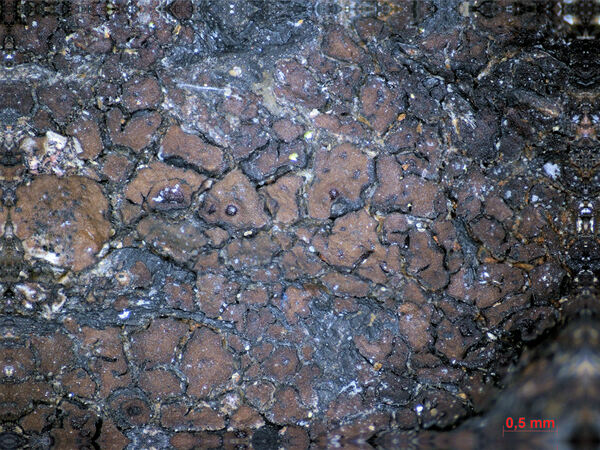
Lucia Muggia CC BY-SA 4.0; Owner: Department of Life Sciences, University of Trieste
Herbarium: GZU (327-81, 1981, Leg. J. Poelt)
Growth form: Crustose
Substrata: rocks
Photobiont: green algae other than Trentepohlia
Reproductive strategy: mainly sexual
Pioneer species
Commonnes-rarity: (info)
Alpine belt: extremely rare
Subalpine belt: rare
Oromediterranean belt: absent
Montane belt: rare
Submediterranean belt: very rare
Padanian area: absent
Humid submediterranean belt: very rare
Humid mediterranean belt: absent
Dry mediterranean belt: extremely rare

Predictive model

Walter Obermayer - Source: Lichens of Noricum - http://lichens-of-noricum.uni-graz.at/
Stubalm-Speikkogel, Poelt 24.6.1973:

Lucia Muggia CC BY-SA 4.0; Owner: Department of Life Sciences, University of Trieste
Herbarium: GZU (327-81, 1981, Leg. J. Poelt)

Lucia Muggia CC BY-SA 4.0; Owner: Department of Life Sciences, University of Trieste
Herbarium: GZU (327-81, 1981, Leg. J. Poelt)

 Index Fungorum
Index Fungorum
 GBIF
GBIF
